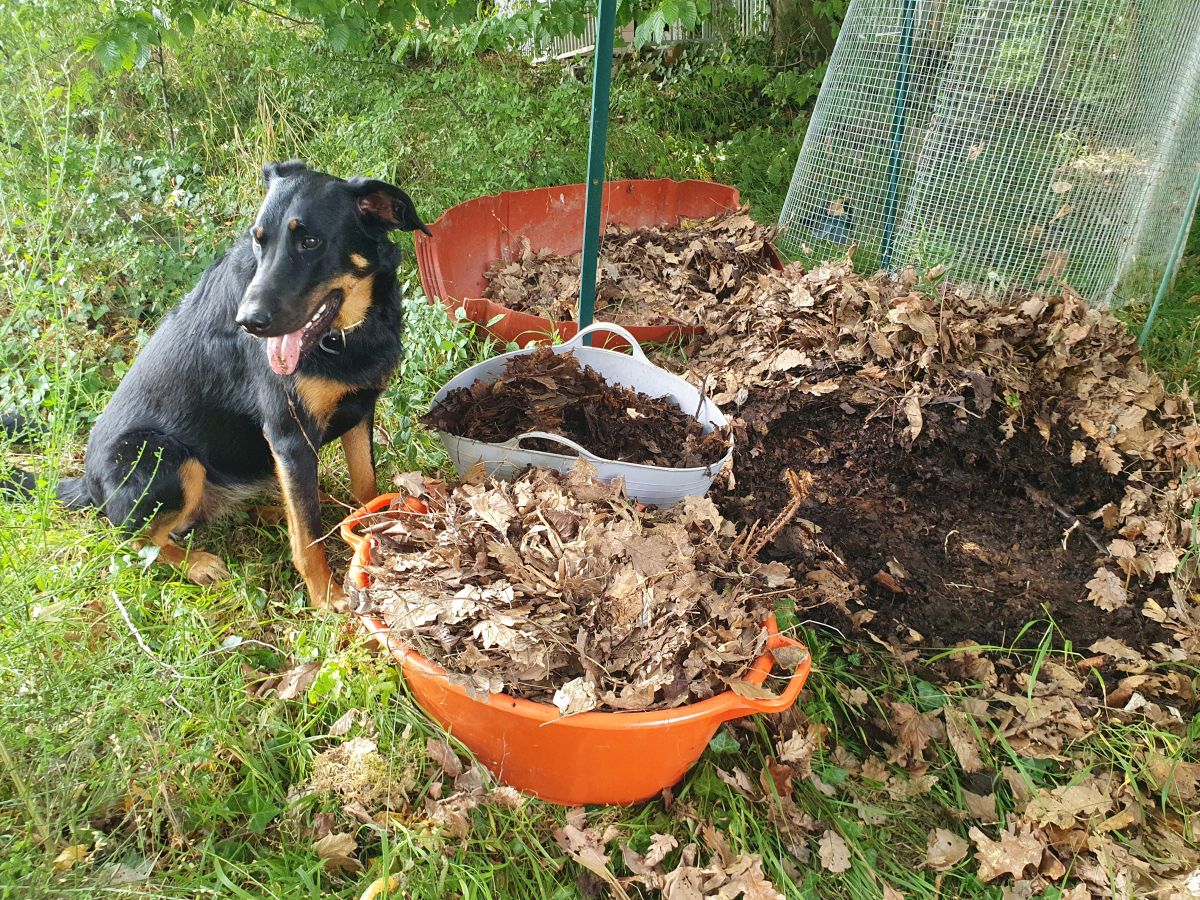
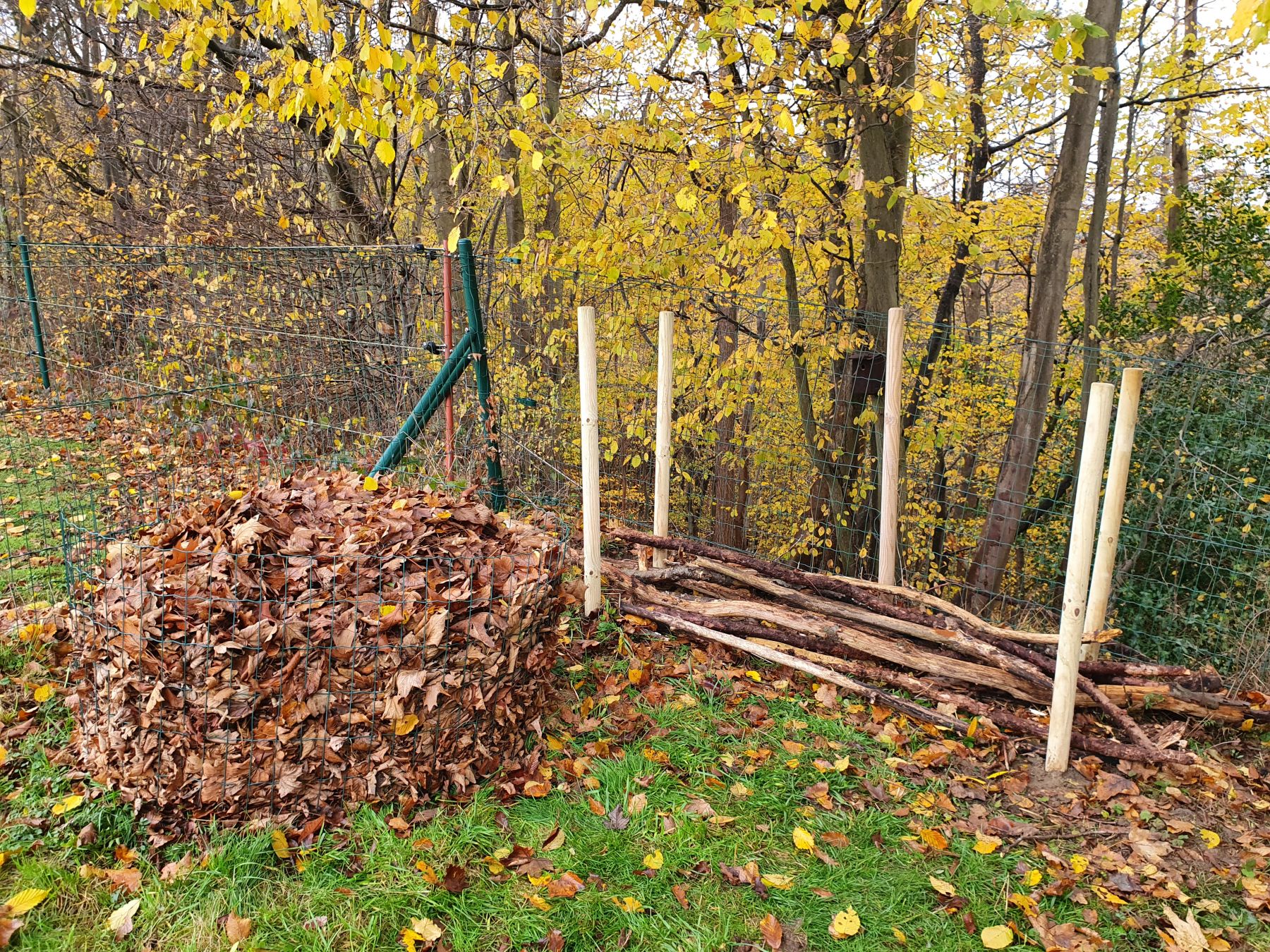
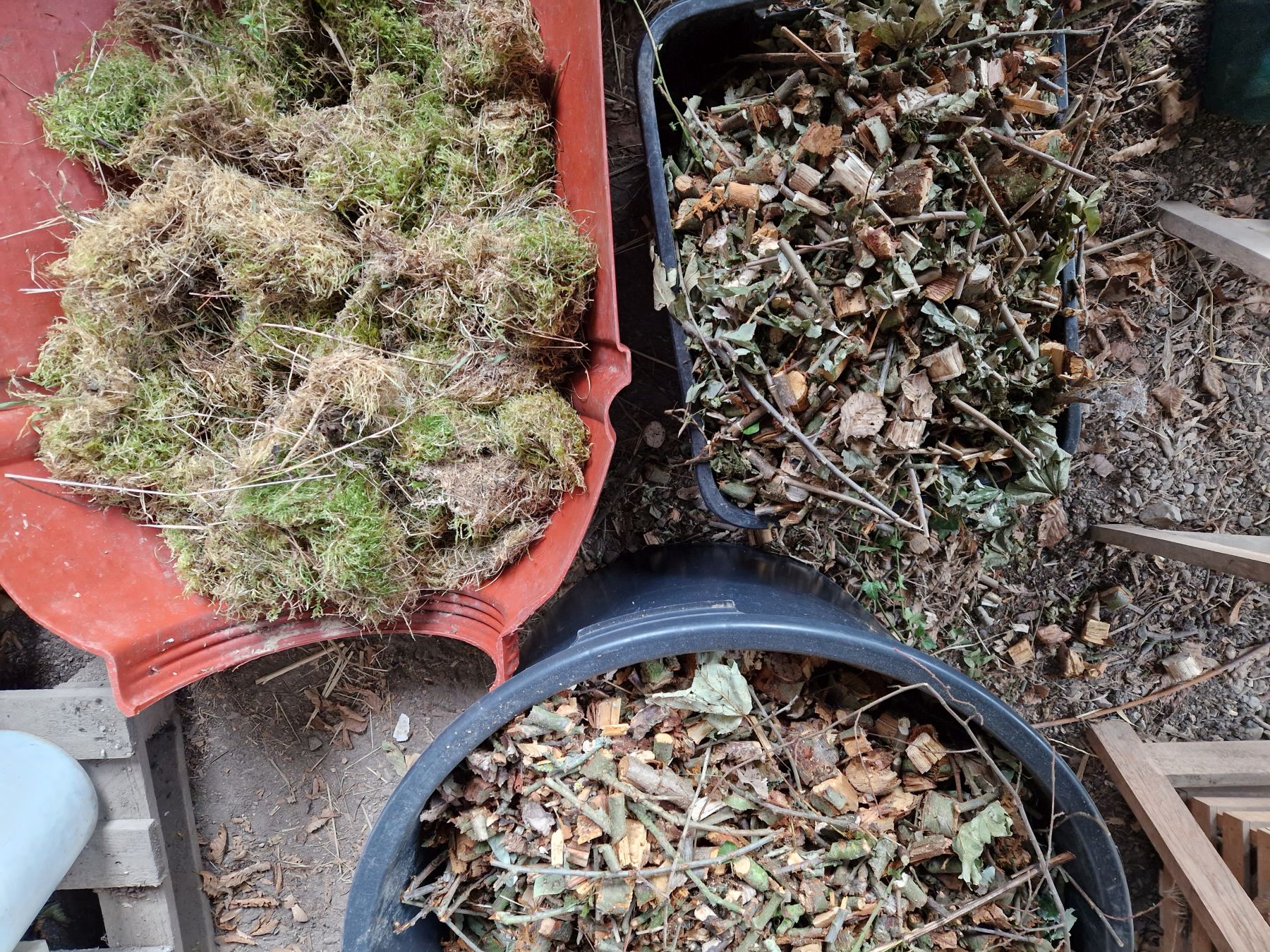
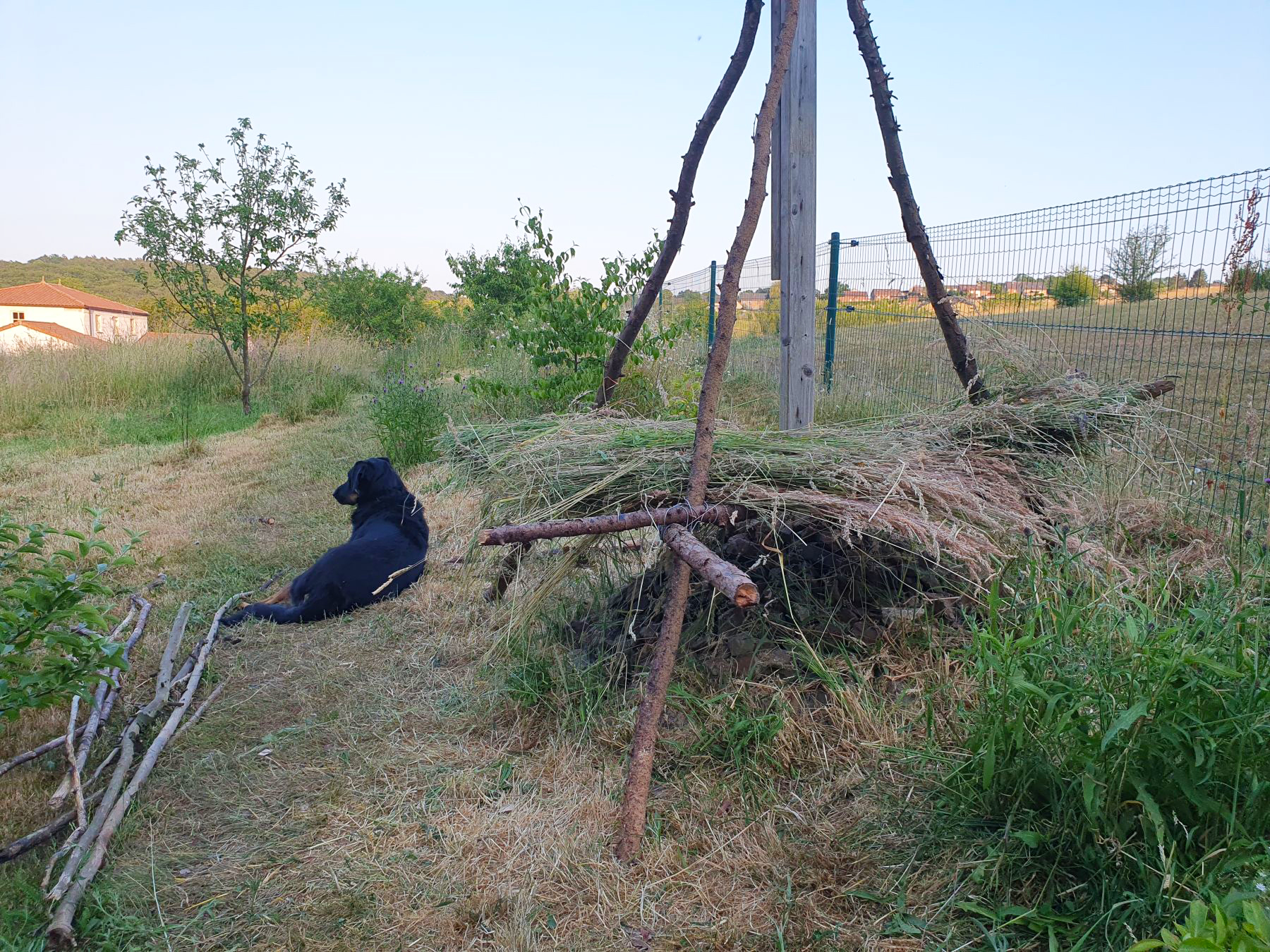
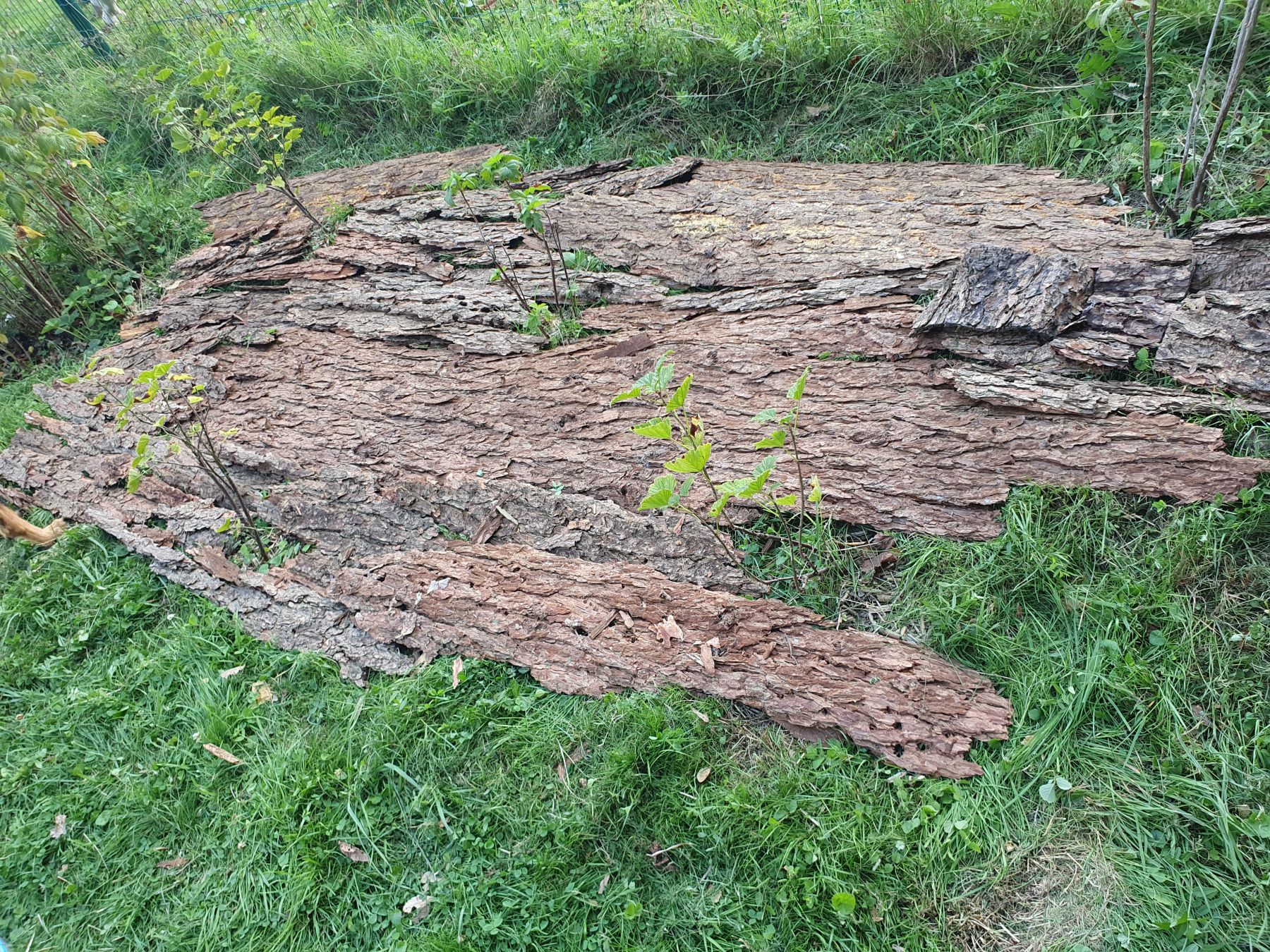
Autumn is the ideal season to get started with the organic material that the garden offers us in abundance. This biodegradable ‘waste’ is ideal for improving your soil or giving it another useful purpose in the garden. There are endless options to get creative with it.
The beauty of autumn's colors will cause a lot of leaf fall in the garden in the coming months. Grass gets choked under leaves, so it's best to rake them up there. Some people make nice circles of leaf litter around tree trunks, which gives a nice visual effect. You can also simply make leaf piles in desired spots or let them compost in a round mesh leaf circle until next year. These are ideal places for hedgehogs or moths to hibernate and for rodents to take shelter.
We have a number of spots in our garden with a lot of grass or herbs where we would like to plant next spring, but the soil is shallow and full of stones. We now place unprinted cardboard with a thick layer of leaf litter on top. This will break down slowly, giving the soil an extra organic layer and the grass or weeds underneath will die. In another spot I experiment with bark.
We also use a lot of leaf litter to cover our vegetable garden beds, always with the same intention: to prevent the soil from drying out, not to give weeds a chance and to enrich the soil. In addition, it ensures that the soil becomes less compact during excessive rainfall.
Do you have pruning waste or are there some dead branches in your bushes or trees that you want to remove for safety reasons? This is ideal for making a dead hedge. Read how to proceed in our previous blog. Dead hedges are a magnet of life and compost slowly so you can continuously replenish them. Many animals find shelter here and over time mosses and ferns often grow on it. You can also use thicker branches to make a hugelkultur bed to grow veggies, according to the principles of permaculture. A hugelkultur bed is a raised vegetable bed on which you plant vegetables year round. The different layers of tree trunks, branches, green waste and gass sods ensure good water management and provide the vegetables with the necessary minerals.
If you still have too much branch waste left, you can chop it up. We are very satisfied with our shredder, which provides us with the ideal mulch to place around newly planted shrubs, berries, and young forest plants. This prevents weed growth, keeps the soil moist and improves the soil. So three times a win.
If you mow your flower meadow one last time in the autumn, you can make a haystack with your clippings. This is an ideal spot for owls, insects and rodents. You can also place grass clippings from your lawn at the bottom of shrubs and hedges. Just make sure you do so in thin layers so it doesn't start to ferment. Autumn is also the ideal sowing time. There is a lot of moss in our lawn on the north side, which now comes off easily. This can be put on a dead hegde, compost heap or to create a shelter for fauna.
Don’t clean everything up. Leave a number of dried flowers or plant stems as they may contain insect eggs or pupae. You only clean them up in early spring, so that these species can complete their life cycle. Moreover, the birds also like the larger seeds such as those of teasel, sunflower and thistles, etc.
As you can see, there are countless options for dealing with your organic waste. It is no longer necessary to take green waste to the container park. And you no longer have to buy compost, mulch and soil improver at the garden center. You can get it directly from your garden. This also makes it more economical and completes the cycle of recycling, just like in nature. Get started with these tips yourself and send us some photos here or at info@inmybackyard.be. Enjoy!


